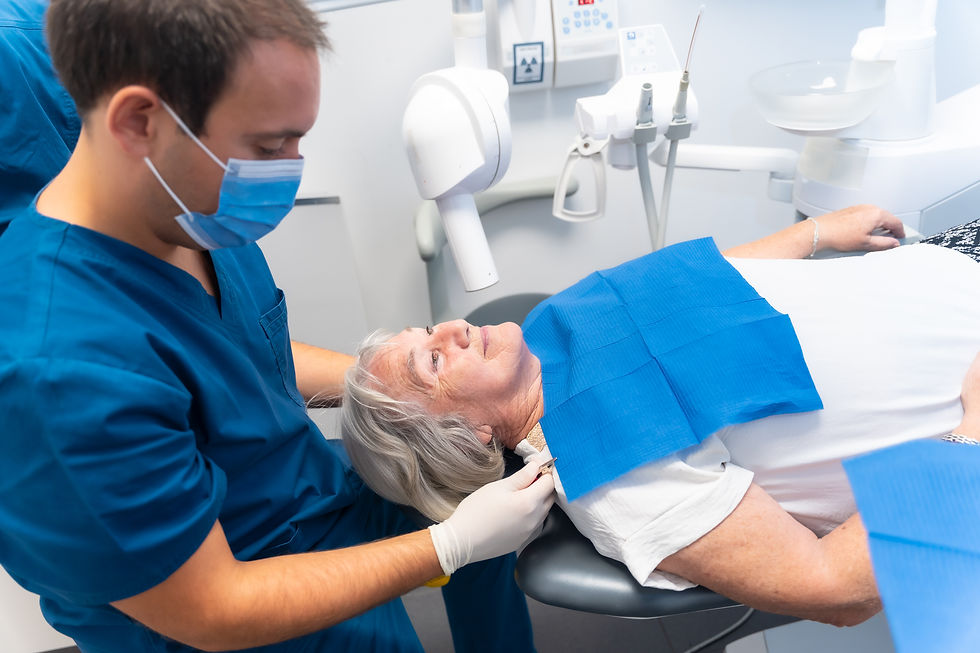The Impact of an Aging Population on the Orthodontic Industry
- wguilliouma
- Jun 16, 2024
- 3 min read
In recent years, the global population has been experiencing a significant demographic shift towards aging. This phenomenon is not only reshaping societal structures and healthcare systems but also influencing unexpected sectors such as the orthodontic industry. Traditionally associated with adolescents and teenagers, orthodontics is now facing unique challenges and opportunities due to the changing demographics worldwide.

Understanding the Demographic Shift
The aging population is a result of several factors, including declining birth rates and improved healthcare leading to longer life expectancy. According to the World Health Organization (WHO), the proportion of people aged 60 years and older is expected to nearly double by 2050, from 12% to 22% globally. This demographic shift is particularly pronounced in developed countries like Japan, Germany, and many parts of Europe, where aging populations are already a reality.
Evolution of Orthodontics: From Adolescents to Adults
Orthodontics, traditionally focused on correcting misaligned teeth and jaws in adolescents, is increasingly catering to adults. This shift is partly due to advancements in orthodontic technology, such as less visible braces and clear aligners like Invisalign, which are more appealing to adults concerned about aesthetics. Moreover, adults are now more aware of the long-term benefits of orthodontic treatment, not just for cosmetic reasons but also for oral health and overall well-being.
Challenges Faced by the Orthodontic Industry
Health Considerations: Older adults may have underlying health conditions that complicate orthodontic treatment, such as gum disease or bone loss. Orthodontists must adapt their treatment plans to accommodate these factors and ensure patient safety and comfort.
Financial Constraints: Orthodontic treatments can be expensive, and older adults may face financial constraints, especially if they are retired or on fixed incomes. This can impact their willingness and ability to invest in orthodontic care.
Patient Expectations: Adults undergoing orthodontic treatment often have different expectations than younger patients. They may prioritize comfort and aesthetics over treatment duration, which requires orthodontists to tailor their approach accordingly.
Technological Adaptation: Incorporating new technologies and techniques suitable for older adults can be challenging. Orthodontists need to stay updated with the latest advancements to provide effective and efficient treatment options.
Opportunities in the Aging Population
Increasing Demand: As more adults seek orthodontic treatment, there is a growing market for orthodontists specializing in adult care. This demographic shift represents a significant opportunity for growth within the industry.
Diversification of Services: Orthodontists can expand their services to include treatments tailored specifically for older adults, such as solutions for periodontal issues or jaw alignment problems exacerbated by aging.
Collaboration with Other Specialties: Collaborating with other dental specialties, such as periodontics and prosthodontics, becomes crucial in managing complex cases involving older adults. This interdisciplinary approach enhances patient care outcomes.
Research and Development: There is a need for research focused on orthodontic treatments for older adults to improve efficacy and address specific age-related challenges. Investing in research can lead to innovations that benefit both patients and practitioners.
The Role of Education and Training
With the evolving landscape of orthodontics, ongoing education and training are essential for orthodontists to stay abreast of new techniques, technologies, and best practices. Continuing education programs focused on adult orthodontics equip practitioners with the skills and knowledge necessary to meet the unique needs of older patients.
Conclusion
The aging population is reshaping the orthodontic industry in profound ways, challenging traditional norms and presenting new opportunities for growth and innovation. Orthodontists must adapt to these demographic shifts by embracing adult orthodontics, addressing age-specific health considerations, and exploring collaborative approaches with other dental specialties. By doing so, the orthodontic industry can not only meet the needs of an aging population but also thrive in an evolving healthcare landscape.
As we look ahead, the intersection of demographics and dentistry will continue to shape the future of orthodontics, influencing how practitioners deliver care and how patients perceive and prioritize oral health throughout their lives. By understanding these dynamics and preparing for the changes ahead, orthodontists can navigate the complexities of an aging population while continuing to provide exceptional care and innovative solutions to patients of all ages.








Comments